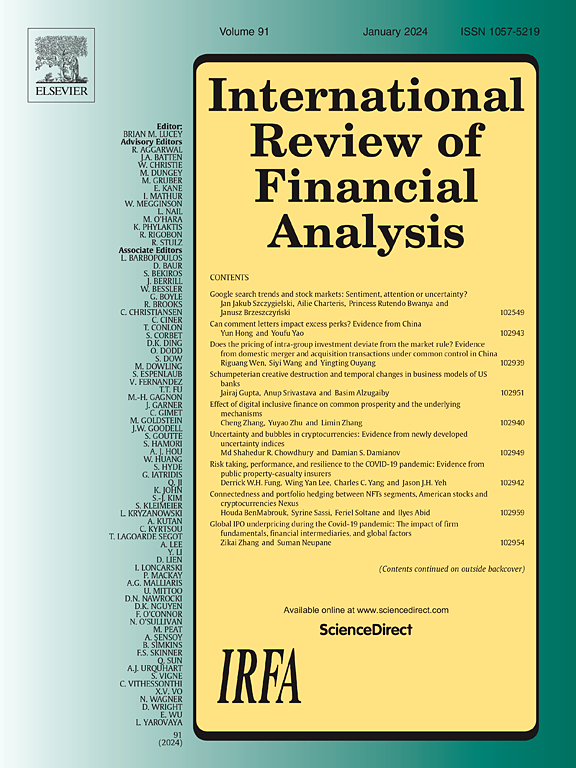人民币增值实际有效汇率:理论、计量与分析
IF 9.8
1区 经济学
Q1 BUSINESS, FINANCE
引用次数: 0
摘要
本文通过整合要素市场理论,完善了增值实际有效汇率的理论框架,建立了基于一般均衡的增值实际有效汇率模型。利用这一框架,本研究试图通过内生地解决增值价格指数和实际最终用途,构建人民币的潜在增值实际有效汇率。从权重、价格指数和替代弹性的角度对由此产生的人民币潜在增值实际有效汇率进行了比较和分析。研究结果表明,价格增值指数的内生处理显著影响人民币潜在增值实际有效汇率的累积变化。此外,实际最终用途的内生加工可以探索中国与其伙伴国家和地区之间因权重差异而产生的投入联系和相对产出差距。替代弹性的变化同样影响权重差异和实际有效汇率的总体波动。此外,影响劳动力需求的外源冲击是潜在增值实际有效汇率变化的主要驱动因素。通过考察人民币的潜在增值实际有效汇率,本研究对中国促进国内需求和推进供给侧改革之间的关系提供了有价值的见解,为市场化的要素价格改革提供了参考点。本文章由计算机程序翻译,如有差异,请以英文原文为准。
The RMB value added real effective exchange rate: Theory, measurement and analysis
This paper enhances the theoretical framework of the value-added real effective exchange rate by integrating factor market theory, leading to the development of a general equilibrium-based value-added real effective exchange rate model. Utilizing this framework, the study attempts to construct a potential value-added real effective exchange rate for the Renminbi by endogenously addressing the value-added price index and the actual final use. The resulting potential value-added real effective exchange rate for the Renminbi is compared and analyzed from the perspectives of weights, price indices, and substitution elasticities. The findings indicate that the endogenous treatment of the value-added price index significantly influences the cumulative changes in the potential value-added real effective exchange rate of the Renminbi. Additionally, the endogenous processing of actual final use enables an exploration of the input linkages and relative output gaps between China and its partner countries and regions, which arise from differences in weights. Variations in substitution elasticities similarly affect both weight discrepancies and the overall fluctuations in the real effective exchange rate. Furthermore, exogenic shocks that affect labor demand serve as the main drivers of changes in the potential value-added real effective exchange rate. By examining the Renminbi's potential value-added real effective exchange rate, this study provides valuable insights into the relationship between China's initiatives to boost domestic demand and advance supply-side reforms, serving as a reference point for market-oriented factor price reforms.
求助全文
通过发布文献求助,成功后即可免费获取论文全文。
去求助
来源期刊

International Review of Financial Analysis
BUSINESS, FINANCE-
CiteScore
10.30
自引率
9.80%
发文量
366
期刊介绍:
The International Review of Financial Analysis (IRFA) is an impartial refereed journal designed to serve as a platform for high-quality financial research. It welcomes a diverse range of financial research topics and maintains an unbiased selection process. While not limited to U.S.-centric subjects, IRFA, as its title suggests, is open to valuable research contributions from around the world.
 求助内容:
求助内容: 应助结果提醒方式:
应助结果提醒方式:


